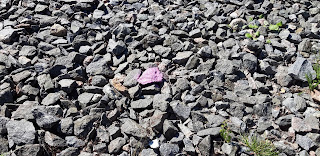Friday, June 28, 2019
The Philosopher's Stone (Why one stone is different?)
The Philosopher's Stone (Why one stone is different?)
The Philosopher's Stone is a mythical item like some kind of version of the "Holy Grail". And sometimes I have thought that this kind of Item is not actually physical thing like some real stone or something like that. Or maybe The Philosopher's Stone was the stone, what was painted by using a certain way, and that would be marked for membership of some community. So it was the stone, what Philosopher owned.
Or maybe it was the thought about the group of stones. And the mission, what master gave the student was to think, why there is a couple of stones, and why one of those stones was different? Was The Philosopher's Stone actually the item, what every philosopher carried in their pocket, and why did they do that?
The alchemists looked for the spiritual aspects from their experiments, and that means that The Philosopher's Stone is not actually the item. I could also be a way of think. or maybe it's the stone, what is painted, and what shows the membership of the secret community of alchemists.
But then we must realize one thing, and that is the alchemists talked by using the allegories, and maybe The Philosopher's Stone is the thing, what alchemists used to make people think about things more carefully. And if we are thinking about things like Philosopher, we should ask one thing, when we see the stone in some rack. That question is, why this stone is put on the rack, and if there is something special like painting, we must realize, that the paint could be the white phosphorous.
If that thing is put on the papers, and somebody steals them, that would cause that entire house will burn. When we are thinking about the role of the alchemists, we must realize, that those people must hide their real purpose of the experiments, and that's why they must use the allegories and another kind of things.
The thing is that alchemists were proto-scientists, who made many interesting and remarkable notifications and inventions in the field of early science. But as we know, they were also looking for the spiritual roads to things like living forever and making gold from every part on the Earth.
Subscribe to:
Post Comments (Atom)
Meissner effect: the electromagnetic levitation.
“A long-standing mystery surrounding an unusual superconductor has taken a decisive turn. By carefully applying shear strain to ultrathin cr...

-
"Illustration of the Feitian 2 hypersonic vehicle demonstrating advanced flight capabilities. Image generated by AI." (Rude Baquet...
-
The grey fog is one of the superweapons that are so horrifying that we cannot even imagine them. That grey fog can erase entire planets. N...
-
"Two twisted boron nitride layers (blue and pink) create a crystal lattice at a distance in which electrons (gold) can arrange themselv...



No comments:
Post a Comment
Note: Only a member of this blog may post a comment.